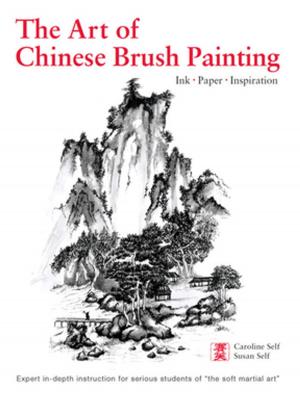Wabi Sabi
The Japanese Art of Impermanence
Nonfiction, Art & Architecture, Architecture, Interior Design, Home & Garden, Crafts & Hobbies, Decorating, Religion & Spirituality, Philosophy, Eastern| Author: | Andrew Juniper | ISBN: | 9781462901616 |
| Publisher: | Tuttle Publishing | Publication: | December 10, 2011 |
| Imprint: | Tuttle Publishing | Language: | English |
| Author: | Andrew Juniper |
| ISBN: | 9781462901616 |
| Publisher: | Tuttle Publishing |
| Publication: | December 10, 2011 |
| Imprint: | Tuttle Publishing |
| Language: | English |
Developed out of the aesthetic philosophy of cha-no-yu (the tea ceremony) in fifteenth-century Japan, wabi sabi is an aesthetic that finds beauty in things imperfect, impermanent, and incomplete.
Taken from the Japanese words wabi, which translates to less is more, and sabi, which means attentive melancholy, wabi sabi refers to an awareness of the transient nature of earthly things and a corresponding pleasure in the things that bear the mark of this impermanence. As much a state of mind—an awareness of the things around us and an acceptance of our surroundings—as it is a design style, wabi sabi begs us to appreciate the simple beauty in life—a chipped vase, a quiet rainy day, the impermanence of all things. Presenting itself as an alternative to today's fast-paced, mass-produced, neon-lighted world, wabi sabi reminds us to slow down and take comfort in the simple, natural beauty around us.
In addition to presenting the philosophy of wabi-sabi, this book includes how-to design advice—so that a transformation of body, mind, and home can emerge.
Chapters include:
- History: The Development of Wabi Sabi
- Culture: Wabi Sabi and the Japanese Character
- Art: Defining Aesthetics
- Design: Creating Expressions with Wabi Sabi Materials
- Spirit: The Universal Spirit of Wabi Sabi
Developed out of the aesthetic philosophy of cha-no-yu (the tea ceremony) in fifteenth-century Japan, wabi sabi is an aesthetic that finds beauty in things imperfect, impermanent, and incomplete.
Taken from the Japanese words wabi, which translates to less is more, and sabi, which means attentive melancholy, wabi sabi refers to an awareness of the transient nature of earthly things and a corresponding pleasure in the things that bear the mark of this impermanence. As much a state of mind—an awareness of the things around us and an acceptance of our surroundings—as it is a design style, wabi sabi begs us to appreciate the simple beauty in life—a chipped vase, a quiet rainy day, the impermanence of all things. Presenting itself as an alternative to today's fast-paced, mass-produced, neon-lighted world, wabi sabi reminds us to slow down and take comfort in the simple, natural beauty around us.
In addition to presenting the philosophy of wabi-sabi, this book includes how-to design advice—so that a transformation of body, mind, and home can emerge.
Chapters include:
- History: The Development of Wabi Sabi
- Culture: Wabi Sabi and the Japanese Character
- Art: Defining Aesthetics
- Design: Creating Expressions with Wabi Sabi Materials
- Spirit: The Universal Spirit of Wabi Sabi















